At the start of the decade, planning a transmission system was relatively less complex due to prior knowledge of quantum of power, point of injection, and point of withdrawal. Even for transfer of 15% unallocated power of central-sector projects to different parts of the country, there was rarely a congestion problem. This was because of the inherent margins built-up in transmission systems, which were enough to take care of the flexibility required for transferring this unallocated capacity.
Over the last decade, power trading has really taken off in India. Pace of generation capacity addition (primarily from the private sector) has increased substantially and the distances between generation and usage of power are larger. Due to these factors, there is a greater need for a very robust transmission system. The 2012 northern-region blackout has brought the focus back on putting in place a reliant and dependable transmission system that can withstand the load demand of various regions and states.
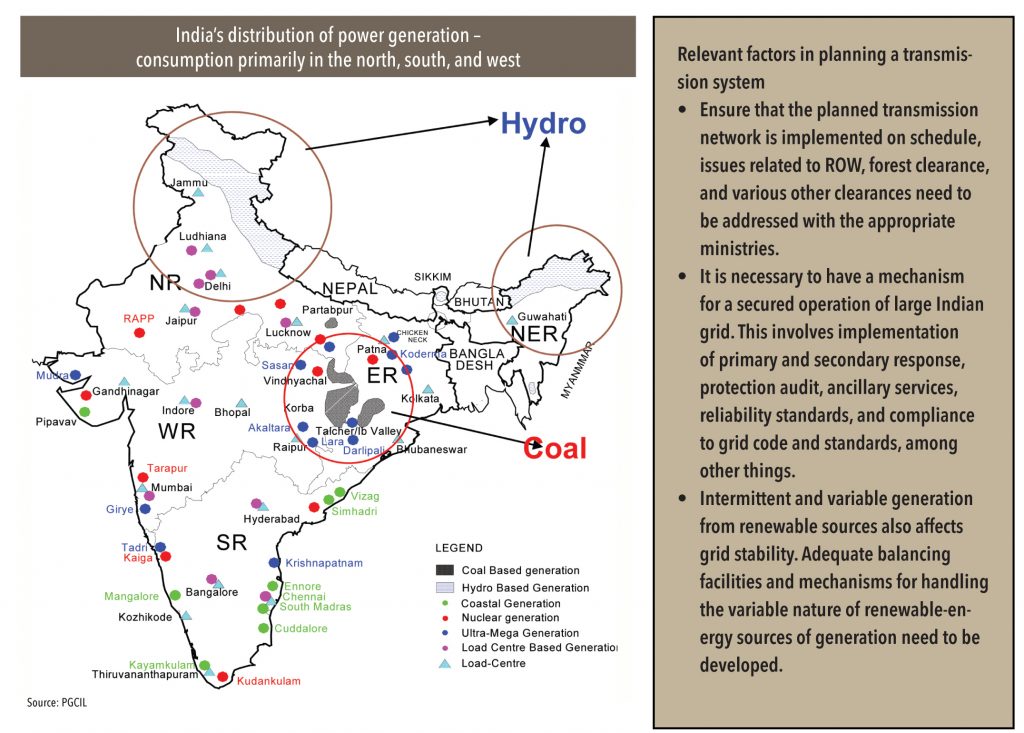
State- and region-wise import-and-export scenarios are assessed by using the available pipeline of generation plants (projected to come up in the 12th and 13th plans). After this, to meet possible import/export requirements, a projection of the additional transmission system is made by using CEA’s system studies . The 18th Electric Power Survey is used as the basis for the demand projections by each state/region for the 12th and 13th plan.
The transmission network is planned in a way that it meets peak load demand across all seasons. On a pan India basis, base load is ~70% of peak load—up to 80% load is present 50% of the time and peak-period of 90-100% load only 5% of the time.
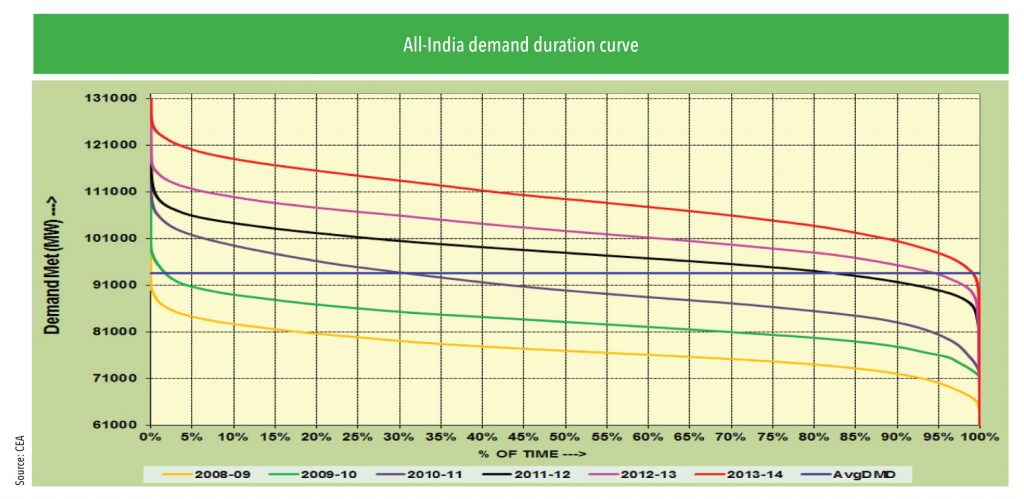
The transmission system requirement is modelled at the state level — it is then aggregated at the regional level and subsequently at the national level. In any given state, there can be state-sector generation tied up completely to the host state, central-sector generation serving more than one state, and generating stations belong to state-sector and inter-state IPPs.
Each state has its own power demand. Power availability from all the sources in a state minus its own demand gives net import or export out of that state. The aggregation of import-export requirement of states within a region, and taking into consideration the diversity factor, translates into inter-regional power transfer requirements. The transmission system is evolved to cater to the inter-state and inter-regional power transfer requirements. While planning the inter-state transmission system, the diversity in demand has to be also kept in mind.
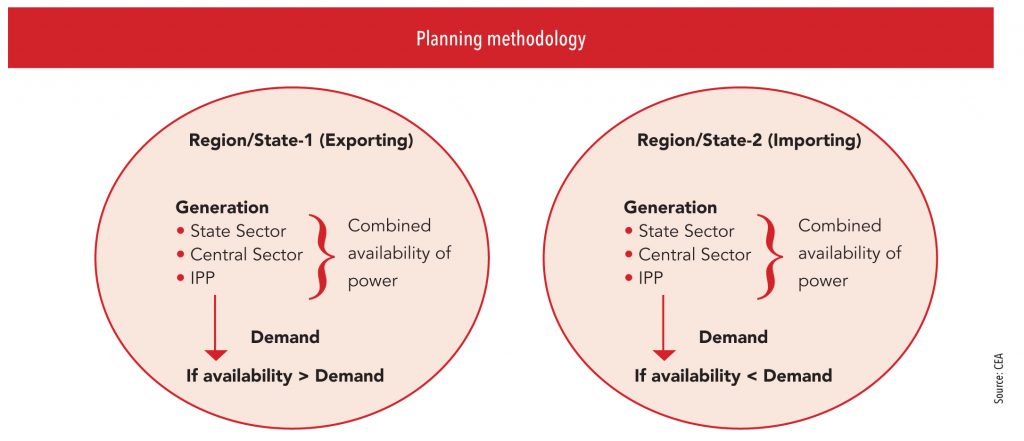
Demand Projection by 2021-22 – peak demand to touch 284GW
As per the Electric Power Survey, peak demand would rise to ~200GW by end of the 12th plan (FY17) and to 284GW by the end of 13th plan (FY22) from 130GW by the end of the 11th plan. The peak demand by FY22 will be more than twice the load as of end of 11th plan.
Demand is estimated to grow by 9% in the 12th plan and 7% in the 13th plan. This implies electricity demand growth of 1.0-1.5x GDP growth during this period. The estimation of the transmission planning system is made to meet this peak and off-peak load demand in the system during summer, winter, and monsoon.
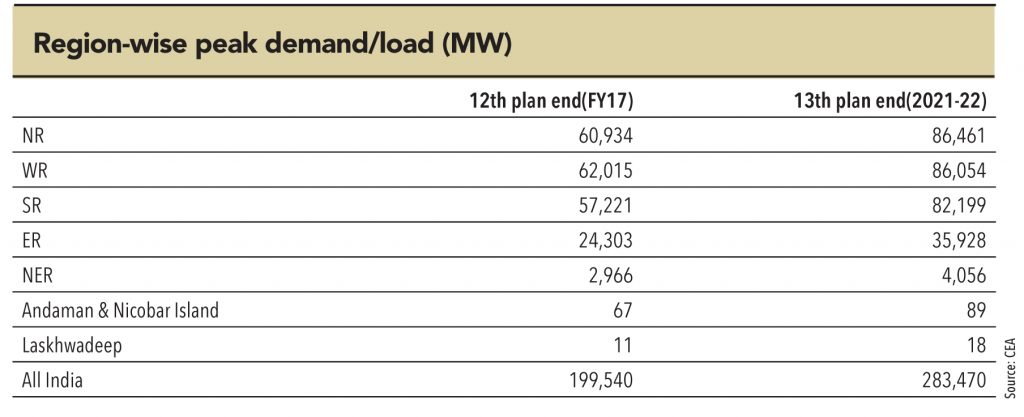
Installed capacity as of the end of the 12th and 13th plan
After having determined the peak demand by the end of the 13th plan, it is important to understand the installed generation capacity by state/region in the same period. This would help understand the surplus/deficit situation for each state and therefore the resultant need for ISTS.
As per the CEA, capacity added during the first three years of the 12th plan was ~62GW and CEA estimates that a total of ~150GW could get added of which ~32GW would be from renewable energy sources. Another 102GW or thereabouts would be added during the 13th plan to take the total installed capacity (including renewables) to 469GW by FY22. This would include renewable capacity by 65GW.
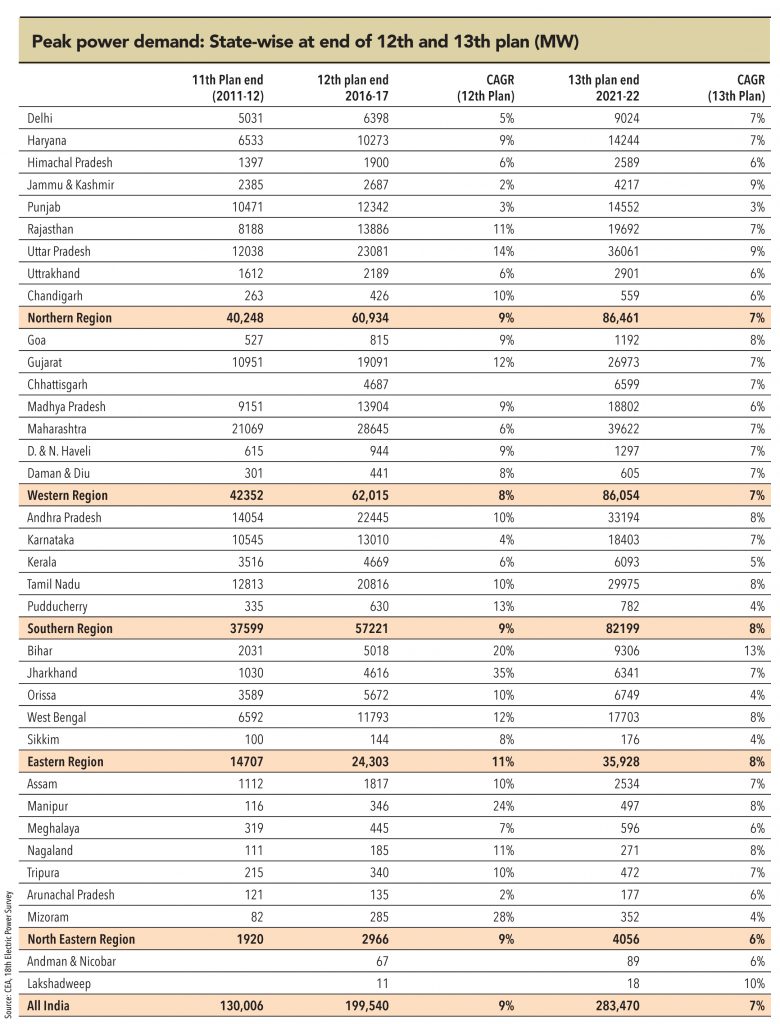
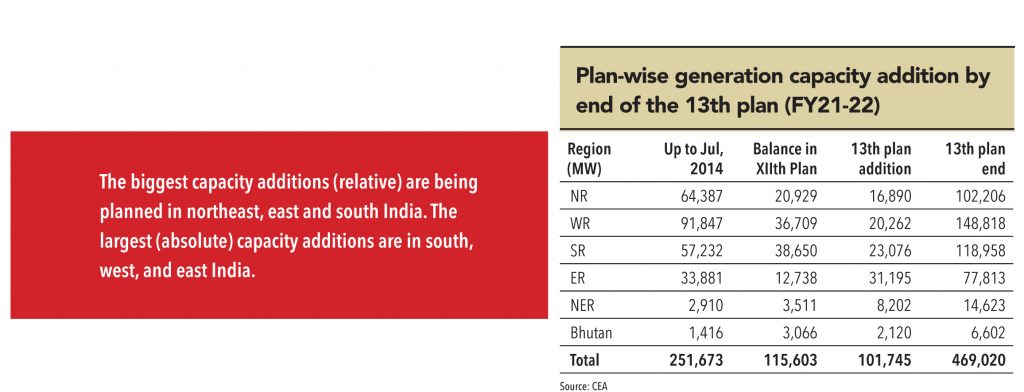

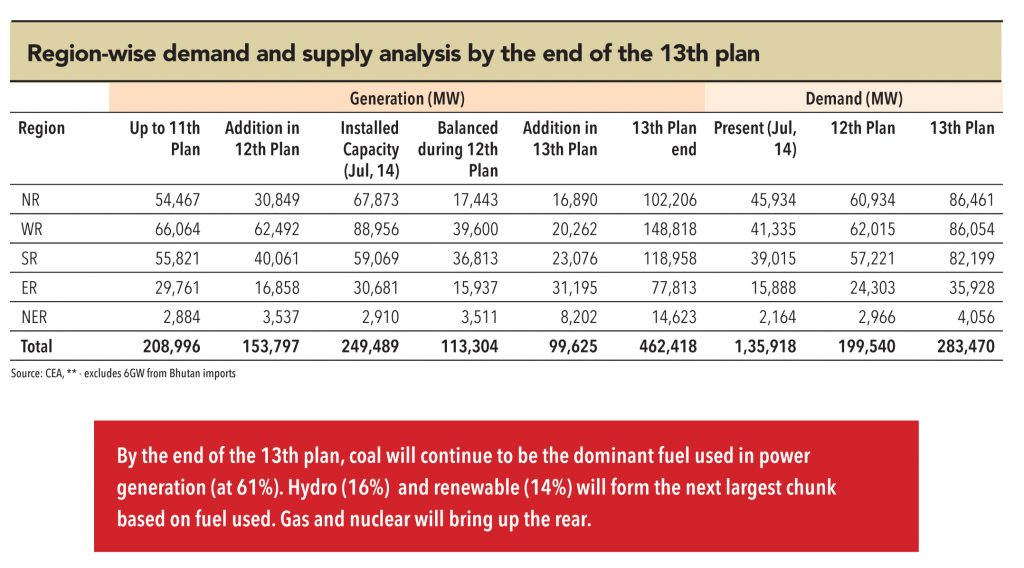
2021-22: Load-generation balance report
The load-generation balance report at the end of the 13th plan indicates that northern regions would have a deficit of ~19-22GW while the southern region would have a deficit of 13-19GW. The surplus in the western region is 12-16GW. This implies that the northern and southern regions are generally in a deficit situation and power surplus from the west, east, and northeast will need to be carried into these regions.
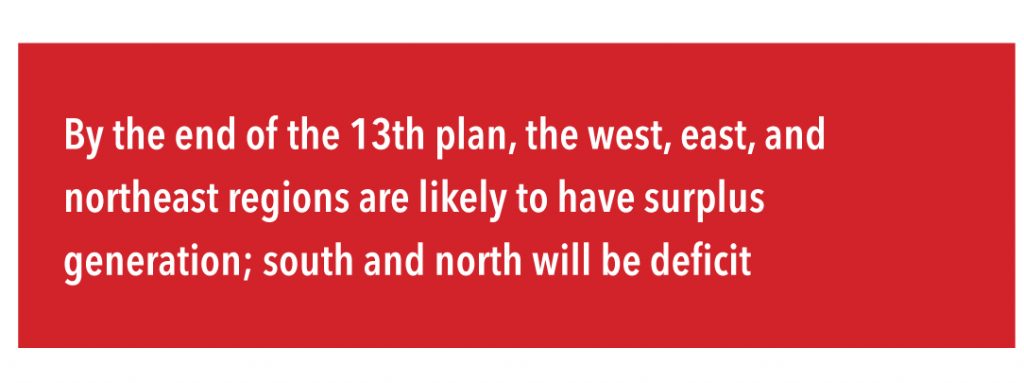
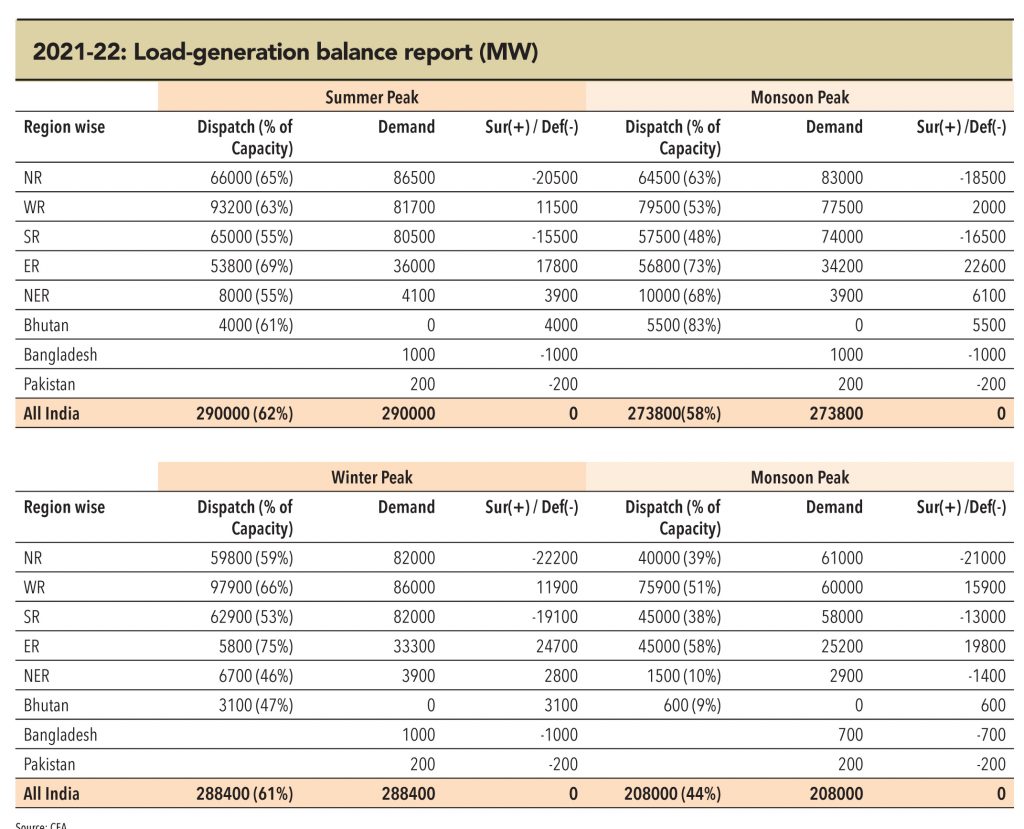
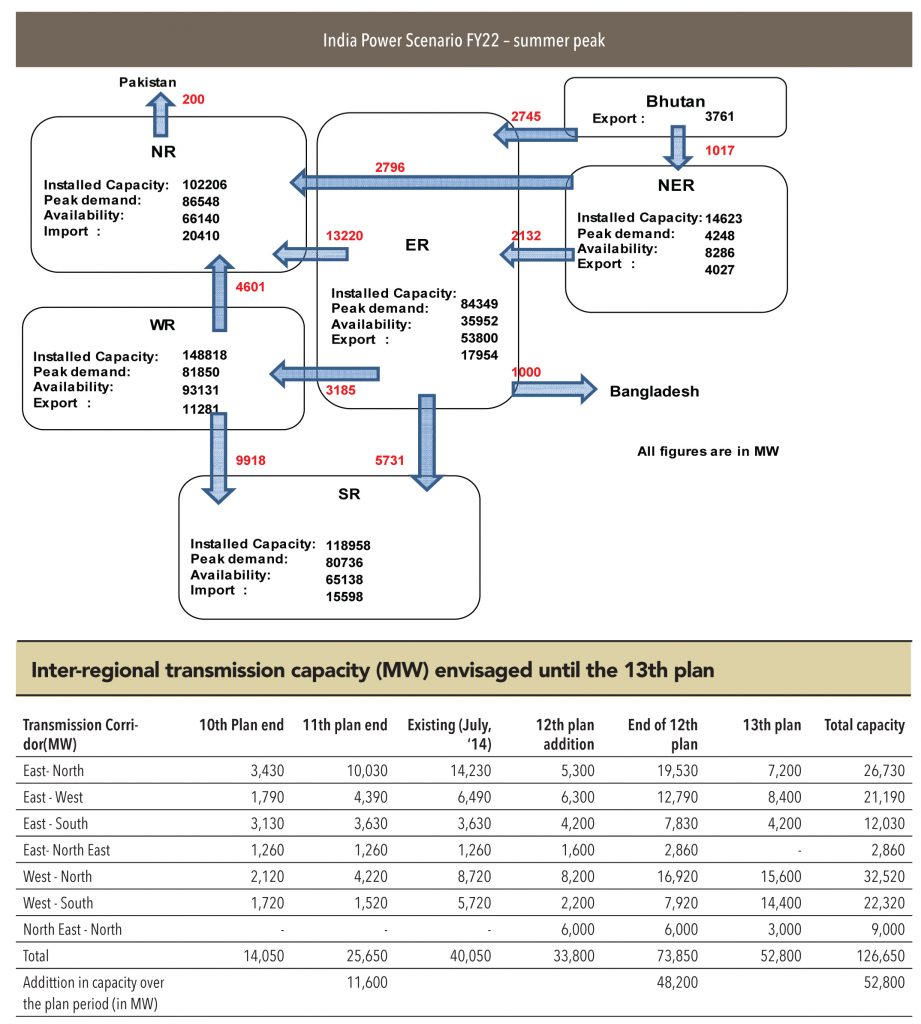
Key inter-regional transmission corridors
Accounting for the deficit/surplus in various regions, along with the diversity factor, the inter-regional transfer capacity is seen increasing to 127GW by the end of the 13th plan (FY22) from 40GW currently. A total of 148,514ckms of transmission line, 15,000MW of HVDC terminal capacity,
and 271,000MVA of transformation capacity of >220kv would need to be set up in the 13th plan (2017-22).

Subscribe to enjoy uninterrupted access